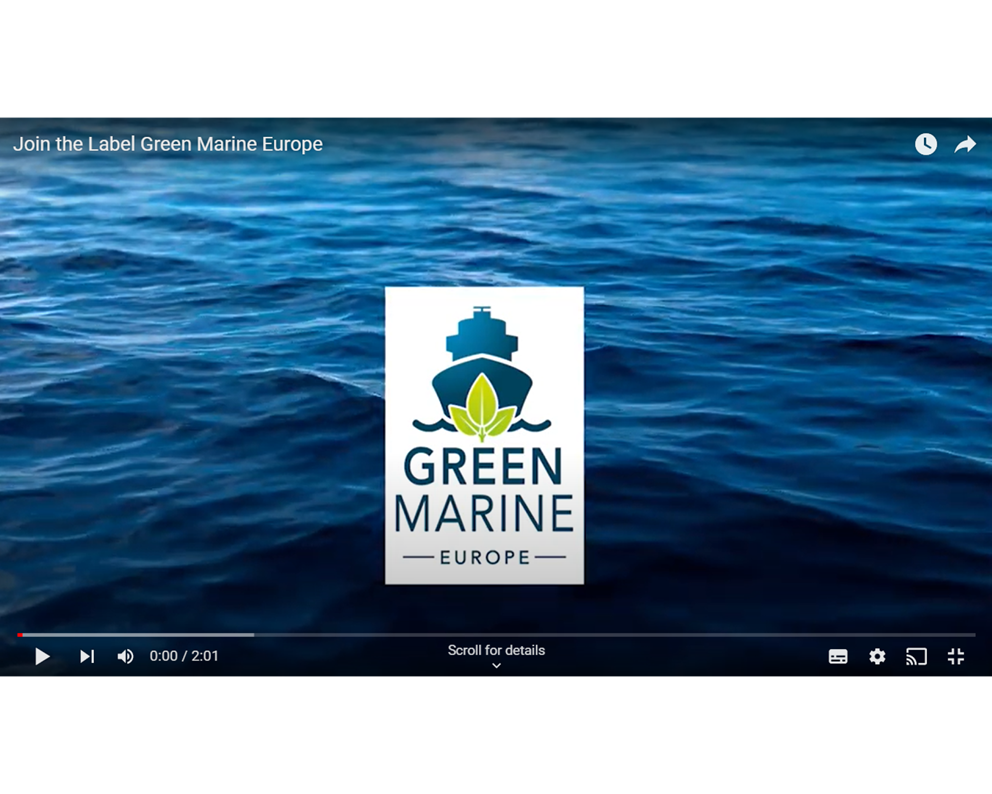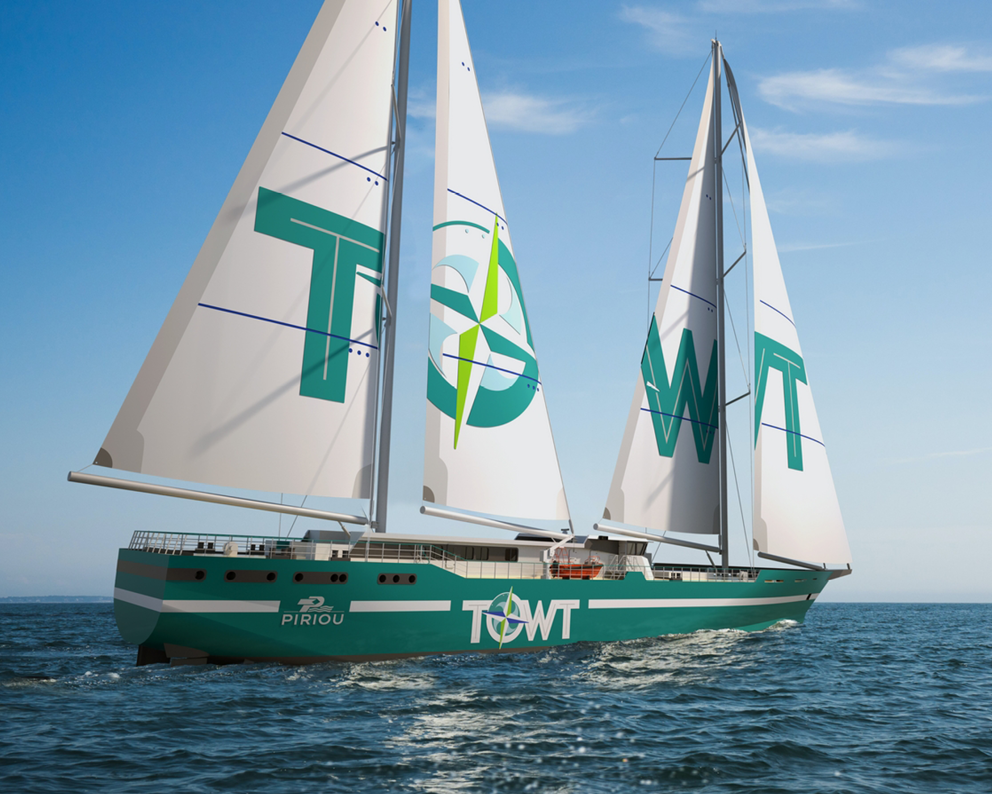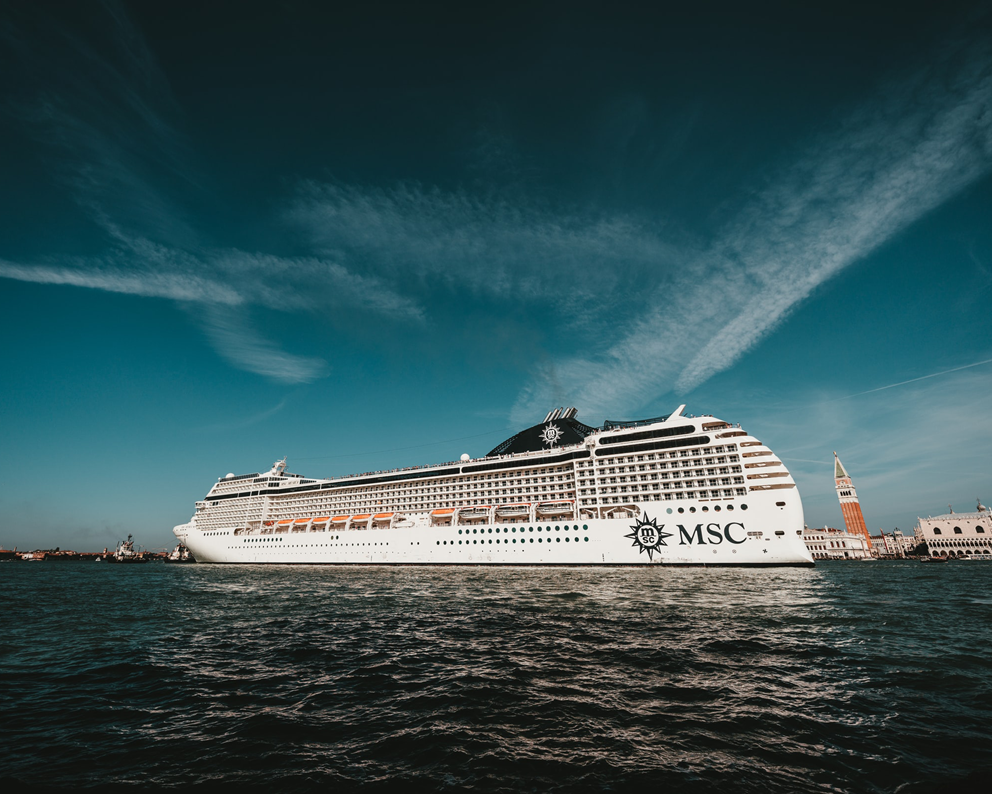
Overseas developments — Green Marine Europe's progresses
European perspectiveGreen Marine Europe bolsters ship owner participation, and prepares to welcome shipyards
Entering its third year, Green Marine Europe now counts 18 ship owners of various types of maritime operations among its participants – a near doubling of last year’s membership.
“It’s great to see that our newest members along with the shipping companies that joined earlier view this program as a sound way to chart their environmental improvement step by step,” says Antidia Citores, Green Marine Europe’s Program Manager and Surfrider Foundation Europe’s Chief Lobbyist.
David Bolduc, Green Marine’s President, couldn’t be more pleased with the license issued to Surfrider to launch the program to European ship owners two years ago.
“Surfrider has proven to be an incredibly reliable, hard-working partner that has built Green Marine Europe’s impressive success despite launching all of this in April 2020 – just a month after most pandemic shutdowns,” he says. “It’s also wonderful collaborating with this organization to the program’s benefit on both sides of the Atlantic.”
It’s also wonderful collaborating with this organization to the program’s benefit on both sides of the Atlantic.
New recruits
The new Green Marine Europe participants include: CMA CGM, the world’s third largest shipping company based in France; MSC Cruises, an Italian global line registered in Switzerland; and, Stena Line, which is the largest ferry operator in northern Europe. The Royal Association of Netherlands Shipowners has also joined as an association member.
Other ship owners currently applying for the Green Marine certification include the French-based exclusively sail-powered TOWT cargo ships, and several underwater cable installers.
“What’s great is that we have various types of ship owners involved, as well as membership from an increasing number of European countries,” says Citores. “There’s certainly been positive momentum over the past few months.”
Governmental backing
A key catalyst has been the support given to Green Marine Europe at the International Union for the Conservation of Nature (IUCN) World Congress held in conjunction with the Government of France last September.
“Having the backing of France’s Minister of Ecological Transition Barbara Pompili from the outset and President Emmanuel Macron relating his strong support of Green Marine Europe at the IUCN World Congress has certainly been helpful,” Citores says.
“President Macron furthermore praised CMA CGM at the conference for its decision at that time to join Green Marine Europe.”

While hosting the One Ocean Summit in February as part of his six-month UN presidency, Macron also expressed his strong wish for ship owners to integrate Green Marine Europe into their sustainability efforts.
“The initial funding that Green Marine Europe has obtained from the European Union as well as the political and financial support from the French government are both amazing and have no doubt helped to quickly expand the membership,” Bolduc says adding that it’s great to see that European ship owners are recognizing the value of the environmental certification program’s adaptable framework, rigour and transparency in achieving and relating ambitious but feasible environmental improvements.
It’s somewhat easier now to convince others of our program’s ability to welcome every kind of vessel owner...
“Surfrider’s credibility as an environmentally committed NGO has certainly helped to win over governmental support more readily,” he adds. “While the Green Marine program itself has established itself over the past 15 years as a collaborative industry-led program that works.”
“Jigsaw puzzle”
Citores says having CMA CGM join Green Marine Europe has made a helpful difference. “It’s somewhat easier now to convince others of our program’s ability to welcome every kind of vessel owner – from smallest to largest in all sectors, including bulk, container, cruise, ferry and research vessels – to challenge but also guide their environmental progress,” she explains.
In addition to starting out just prior to the pandemic restrictions, Green Marine Europe has been more challenging to set up with the plethora of languages, cultures and, of course, regulations governing Europe’s maritime activities. “Fortunately, European Union regulations do take different national legislation into account, but Norway and the United Kingdom, for example, don’t belong to the EU,” Citores notes. “It’s a bit of a jigsaw puzzle, for sure.”
Regional differences in regulations must also be considered, such as the Sulphur Emissions Control Area (SECA) planned for the Mediterranean as of 2025. “In this case, we also have to take into account the fact that more European ports are banning the use of open-loop scrubbers from their vicinity,” Citores adds.
CO2 template
As with Green Marine in North America, Green Marine Europe undertakes to revise its performance indicators annually. “Last year, we decided to update the aquatic invasive species which required a few changes, but the big challenge was the CO2 emissions indicator,” Citores shares. “We had to consider upcoming regulations that are still being debated by the IMO.”
Intense discussions among the Green Marine Europe members led to a major consensus regarding the approach to decarbonization by 2050. They subsequently worked backwards from the IMO’s 2050 deadline for decarbonization to figure out the steps necessary to achieve this challenge. “In the process, we had to take into account every type of vessel participating in the program and the different nature of their operations,” Citores relates. “We also had to fit this into the five levels of Green Marine’s performance indicator framework.”
Citores praises the expertise and resources of Green Marine’s advisory committees as well as access to the industry’s established CO2 emissions annexes for being able to work out this decarbonization tract.
Mutual benefits
Bolduc cites this Green Marine Europe accomplishment as an example of how the North American and European programs are mutually beneficial. “While the regulatory and other sensibilities in North America aren’t identical to Europe’s when it comes to decarbonization, we’ve already decided to review this indicator in the coming year and ultimately make our Level 5 goal the same: decarbonization by 2050,” he says.
In other areas, Green Marine Europe is benefitting from Green Marine’s groundwork in North America. “There’s no IMO or EU legislation to reduce underwater noise, so this performance indicator is based on the will of our ship owners to seek better knowledge and act upon this indicator in the course of decarbonization, namely fleet renewal,” Citores says. “We have also learnt a lot from Bureau Veritas and DNV in terms of the available technology to measure and monitor a vessel’s noise signature.”

Citores, who is also the founder and vice-president of the Ocean & Climate Platform, and a member of the European Commission’s mission board for health oceans, seas, coastal and inland waters expert group, aims with her team to continue to build the political will that has to date helped to fuel Green Marine Europe’s establishment.
"Various companies selling large consumer brands are likewise starting to become more aware of public opinion in terms of their sustainability efforts,” Citores adds. “They are beginning to take their corporate social responsibility more seriously and want some kind of reliable evidence that they are using shipping lines that make an effort to reduce their carbon footprint.”
Shipyards collaboration
Green Marine Europe is aiming to have upwards of 30 members for 2023-2024 certification. “Our next gamble is to open the program to shipyards because we had shipyard managers approach us with a keen interest in taking part,” Citores says.
The criteria for shipyard participants are being developed in tandem with Green Marine in North America. “It turned out to be perfect timing for this first-ever international collaboration on a performance indicator,” Bolduc shares. “Our program’s shipyard membership has recently doubled so we’ve initiated the process of establishing a distinct program specifically for them rather than continue to have them assess their performance based on the criteria for terminal operators.”
Citores is keen to get into the possible criteria. “When you get right down to it, everything is part of some kind of ecosystem,” Citores says. “We have to take into account from the outset the material we use to build a vessel in terms of the impact of its extraction/fabrication, to its service life, and to how we can finally recycle it for use again.”
We’re also looking at how we might continue and even deepen our alliance, given the benefits we’ve already seen.
Future governance
All the work ahead will have the Surfrider team busy as it continues to manage Green Marine Europe under its licence for another two years. “It is a bit out of the ordinary having an NGO such as ours head up this kind of major environmental effort, but it just shows what’s possible,” Citores says. “We’ve been clear all along that we hope that the maritime industry will ultimately run this program.”
Discussions have already been initiated about Green Marine Europe’s future governance. “We’re also looking at how we might continue and even deepen our alliance, given the benefits we’ve already seen in sharing knowledge, expertise and resources, as well as in building the greater awareness and influence of Green Marine by collaborating on key issues,” Bolduc says.
While Green Marine Europe participated in GreenTech 2021 online conference, only Bolduc has met any of the team or membership in person so far because of pandemic circumstances.
“It will be so great to have some of them at this year’s conference in Montreal so they can meet our board of directors and many of our members face to face to discuss how to continue this wonderful collaboration toward a more sustainable future.”

This content is not available because some cookies are blocked.
By clicking on this link, you agree that Youtube may collect data about you for targeting purposes. The video content will be displayed.
Green Marine Europe provides clear benchmarks for advancing the European shipping industry’s sustainability.



